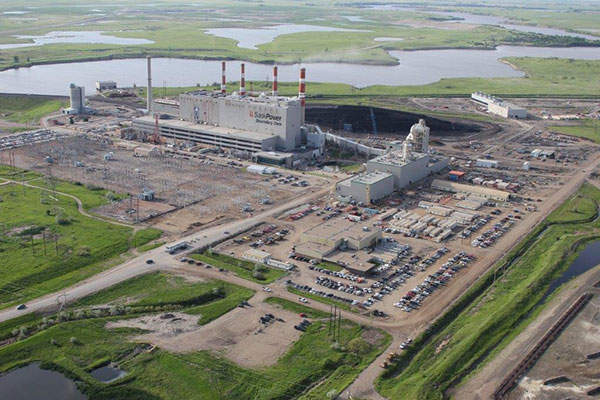The Boundary Dam is an 824MW coal-fired plant located in Estevan in Saskatchewan, Canada. Owned by SaskPower, it consists of six production units.
The plant’s production Unit 3, which opened on 2 October 2014, is the world’s first commercial-scale carbon capture and storage (CCS) process on a coal-fired power plant.
Unit 3 was scheduled for closure in 2013 after 45 years of service. A retrofit was proposed to extend the life of the unit by a further 30 years rather than decommissioning and constructing a new one.
The retrofit was designed to allow the installation of CCS equipment that would convert Unit 3 into a reliable long-term producer of 110MW of clean base-load electricity and simultaneously enhance oil production in the province. It is also expected to reduce greenhouse gas emissions by capturing one million tonnes of CO₂ a year.
CCS integration was one of 30 projects endorsed by The Carbon Sequestration Leadership Forum (CSLF) in 2009. It was executed by a public-private partnership (PPP) between the Canadian Government, the government of Saskatchewan, SaskPower and a number of private companies. The government positioned the CCS project as a demonstrator of sustainability in power plant technology.
Boundary dam project financing
The Unit 3 retrofit, which cost approximately $354m, including the turbine cost, was self-financed by SaskPower. Installation of the CCS equipment cost approximately $1.4bn. The Canadian Federal Government committed C$240m in 2008.
History of Boundary Dam
SaskPower had initially decided to construct a 300MW plant to replace the ageing Unit 3. However, because of an increase in the construction cost from $1.5bn to $3.8bn, the proposal was shelved and a less expensive retrofit was considered.
The retrofit and CCS integration project was approved in 2008, with a final decision to retrofit Unit 3 taken in December 2010. Critical works of the main components started in early 2011 and physical construction of the unit was completed in December 2013.
Development of Unit 3 retrofit
The Unit 3 retrofit reduced the plant’s output from 139MW to 110MW. It included the replacement of the existing steam turbine generator with a new one that can be integrated with the CO₂ and SO₂ capture mechanism.
The captured CO₂ is compressed and transported through a 66km-long pipeline to an enhanced oil recovery project near Weyburn, which is part of an agreement signed with Cenovus Energy to purchase the full volume of one million tonnes of CO₂ a year.
The unused CO₂ is transported to an injection well and storage site belonging to an Aquistore research project that is managed by the Petroleum Technology Research Centre. The SO₂ provides feedstock to a 50t per-day sulphuric acid plant, which will be built near the existing Unit 3.
A flue gas desulphurisation (FGD) system was put in place to allow the installation of CCS equipment, which reduces CO₂ emissions by approximately 90%.
The flue gas is treated and hydrated before being compressed and transported to oil fields. This contains zero SO₂ and just 10% CO₂.
Cansolv’s FGD technology then integrated the SO₂ and CO₂ systems within a single plant.
Contractors for the CSS project
The engineering, procurement and construction (EPC) contract for the CCS project was awarded to SNC-Lavalin and Cansolv Technologies in March 2010. The EPC contractor was responsible for the commissioning and start-up of the plant.
A $107m contract to retrofit the boiler was awarded to Babcock & Wilcox in January 2011. The company supplied critical components such as heat transfer surfaces and a new combustion system with low NOx technology.
In February 2010, SaskPower signed a collaboration agreement with Hitachi to work on the advancement and implementation of CCS technology, including the air quality control system, boilers and steam turbine generators.
Hitachi Canada also supplied the custom-designed gas turbine. A joint venture between Alberici Western Constructors and Balzer’s Canada installed the turbine during a six-month planned outage at the plant in 2013.
Bidding process
SaskPower issued a request for proposals in 2008 for the CCS demonstration project. Flour Canada, Powerspan Corp and Cansolv Technologies were selected in the first stage.
Stantec Engineering, an independent consultant, evaluated the proposals based on performance, capital costs, operating costs, cost of capture and associated risks.
Cansolv Technologies was chosen as the preferred bidder in the first quarter of 2010.
A two-stage procurement process was conducted for the supply of steam turbines. Of the seven vendors that were invited, Hitachi Canada won the bid.







